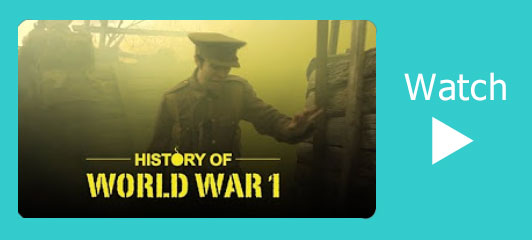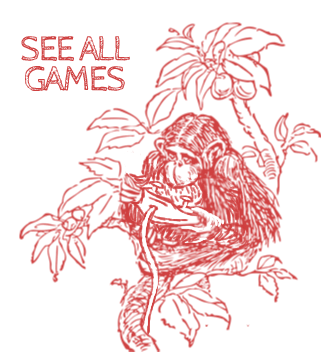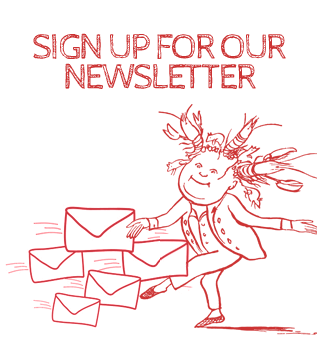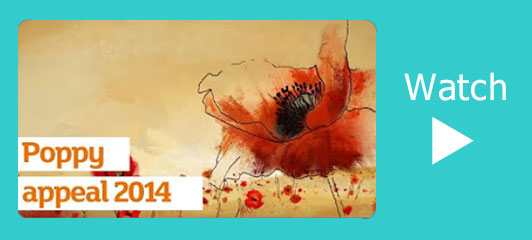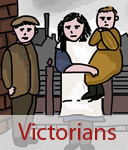World War 1
World War 1 facts for kids learning KS2 at Primary School. Homework help about history of the Great War, how it ended and Remembrance Day.
Time: 28th July 1914 - 11th November 1918
What was World War 1?
World War I was also known as The Great War because it was the biggest and most deadly war the world had ever seen at that time. It began in 1914 and lasted until 1918.
More than 65 million soldiers from countries all over the world took part in the fighting. Around 9 million soldiers were killed, and over 21 million were injured. Battles were fought across Europe, especially in France and Belgium, but the effects were felt all over the world.
This was the first time that so many nations had fought against each other on such a huge scale. The war changed countries, borders, and even people’s lives back home. It also led to big changes in technology, medicine, and the way future wars would be fought.
When the fighting finally ended in 1918, millions of people hoped the world would never see a war like it again.
- The noise of the guns in France was so loud that people in England could sometimes hear it across the sea!
- After the war ended, farmers in France still found helmets, bones, and bullets buried in their fields for decades — some still do today!
 BBC Bitesize - WW1 Class Clips
BBC Bitesize - WW1 Class ClipsAll about World War1, life about the children who lived through the war, family life during the war and famous figures through class clips.
Why did World War 1 start?
Before World War I began, many European countries were already jealous of each other’s power and land. Britain, France, and Russia had agreed to help one another if war ever broke out — they were called the Allies. On the other side, Germany and Austria-Hungary made their own friendship group, known as the Central Powers.
Then, something shocking happened.
On 28th June 1914, Archduke Franz Ferdinand, who was going to be the next ruler of Austria-Hungary, went on a visit to the city of Sarajevo. While there, he was shot and killed by a Serbian student named Gavrilo Princip.
This one event set off a chain reaction. Austria-Hungary blamed Serbia and, with help from Germany, decided to attack. Russia came to defend Serbia, and before long, country after country joined in on both sides.
By August 1914, Europe was at war — and soon, soldiers from countries all over the world were pulled into the fighting. What started as one small conflict quickly became the biggest war in history.
 History - 10 facts
History - 10 factsMost of us are fairly well versed on many of the facts of Word War I, but there are some that are so quirky that we don't know about them.
 CBBC - What happened during World War 1?
CBBC - What happened during World War 1?On 4 August 1914, Britain declared war on Germany. People in Britain opened their newspapers the next morning and found out war had begun.
Who fought in World War 1?
World War I wasn’t just a fight between a few countries — it was a global war involving people from all around the world. The countries were divided into two main sides:
- The Allies – These were Britain, France, and Russia. Later, Italy, Greece, Portugal, Japan, and eventually the United States joined them.
- The Central Powers – These included Germany, Austria-Hungary, Turkey (known then as the Ottoman Empire), and Bulgaria.
What started as a fight between Austria-Hungary and Serbia quickly grew into a huge war. This was because countries had promised to help their friends if they were attacked. When Austria-Hungary declared war on Serbia, Russia joined to protect Serbia, Germany declared war on Russia, and soon Britain, France, and other countries were drawn in.
The fighting spread far beyond Europe. Battles took place in Africa, the Middle East, and Asia, as countries sent soldiers and supplies from all over the world. Soldiers came from the British Empire, including India, Canada, Australia, and New Zealand. Many of these troops had to travel thousands of miles to fight.
The seas were dangerous too. German submarines (U-boats) sank ships carrying food and supplies to Britain, including the famous Lusitania, which killed over 1,000 people, including Americans. These attacks helped bring the United States into the war in 1917, giving the Allies extra soldiers, equipment, and support.
What was life like for soldiers?
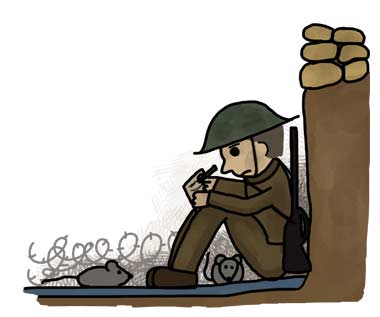 Facts for kids - WW1
Facts for kids - WW1
Life for soldiers in World War I was extremely hard, uncomfortable, and often terrifying. Most of the fighting took place in trenches — long, narrow ditches dug into the ground to protect soldiers from enemy fire. These trenches stretched for hundreds of miles across Europe, especially along the Western Front in France and Belgium.
Between the two sides’ trenches was a deadly space called “No Man’s Land.” It was full of mud, barbed wire, craters from exploding shells, and sometimes even the remains of soldiers who never made it back. Crossing No Man’s Land was one of the most dangerous things a soldier could do.
Inside the trenches, life was miserable. The soldiers were constantly surrounded by mud and water. When it rained, the trenches could flood up to their knees or even their waists. Some soldiers got “trench foot”, a painful condition caused by standing in cold, wet boots for too long — sometimes their feet even began to rot!
The trenches were also crawling with rats and lice, which made the soldiers itch constantly. Food was basic — tins of meat, stale bread, and biscuits as hard as bricks. Fresh food was rare, and clean drinking water was difficult to find.
Even when things were quiet, the soldiers couldn’t relax. At any moment, the enemy might fire shells, release poison gas, or charge across No Man’s Land. The noise of explosions was deafening, and the constant danger made many soldiers feel anxious or scared. Still, they stayed strong, supported their friends, and showed incredible bravery every single day.
Life in Britain during the war
Back home, life in Britain during World War I was very different — and often just as challenging as life on the battlefield. When millions of men went off to fight, families were left behind to keep the country running.
For the first time, women began working in jobs that had always been done by men. They became factory workers, engineers, drivers, nurses, and farmers. In weapons factories, women made bullets, bombs, and shells — but it was dangerous work. The chemicals turned some women’s skin yellow, and they were nicknamed “canary girls.” Others worked long hours in hospitals, caring for wounded soldiers brought home from the front.
Food became harder to find because enemy ships (German submarines called U-boats) stopped supplies from reaching Britain. To make sure everyone had enough to eat, the government introduced rationing. People were encouraged to grow their own vegetables in gardens, parks, and even schoolyards — this was known as the “Dig for Victory” campaign. Posters everywhere told people to “Save Bread!” and “Waste Nothing!”
Children played an important part too. Many helped on farms, collected scrap metal for making weapons, and knitted socks and scarves for soldiers at the front. Families listened to war news on the radio and wrote letters to loved ones far away. Every day, people hoped to hear that their fathers, brothers, or sons were safe.
Life was tough, but British people showed amazing courage and teamwork. Everyone — men, women, and children — did their bit to help the war effort.
New weapons & technology
World War I was the first major war to use many new weapons and machines, which made fighting even more dangerous.
- Tanks: These huge, armoured vehicles were used for the first time to cross the muddy, dangerous trenches. They could crush barbed wire and protect soldiers inside, but they were slow and often broke down.
- Aeroplanes: Planes were used for spying on enemy positions and later for dropping bombs. Pilots had to fight each other in the air, which was called a dogfight.
- Submarines (U-boats): German submarines could sneak under the water and attack ships carrying soldiers, weapons, and food. Many ships sank, leaving hundreds of people trapped in the cold water.
- Poison Gas: One of the scariest new weapons was poison gas, including mustard gas, which burned soldiers’ eyes, throat, and lungs, making it almost impossible to breathe. Soldiers had to wear gas masks, which made them look like strange bug-eyed creatures. Sometimes the gas could linger in the trenches for days, making the soldiers too sick to fight.
- Machine Guns: Rapid-firing guns could shoot hundreds of bullets every minute, making it very deadly to cross open fields.
- Artillery: Huge cannons could fire shells for miles, shaking the ground and leaving huge craters in No Man’s Land.
 Facts for kids - WW1
Facts for kids - WW1Answering questions like, why did it start? Who had the biggest army in the war? And, who were the heroes of the war?
 History Kids - WW1 Facts & Information
History Kids - WW1 Facts & InformationFacts and information cover the most important events in World War 1 as they happened, and why the war began in the first place.
Hear memories of the soldiers in the trenches and learn what life was like for them.
 Imperial War Museum
Imperial War Museum Visit the Imperial War Museums in London, Manchester or in Cambridgeshire for a close up view of war life.
How did World War 1 end?
After four long, terrible years, more than 9 million soldiers had died, and 21 million were wounded. Both sides were exhausted. Russia was the first country to give up, signing a peace agreement with Germany in 1917. But the Allies got a boost when the United States joined the war, sending fresh soldiers, supplies, and new energy to the fight.
The Allies slowly pushed the German army back, winning more battles and taking control of key areas. By late 1918, Germany had run out of food, weapons, and soldiers. On 11th November 1918, Germany finally surrendered, and both sides agreed to stop fighting. This agreement was called the Armistice, and it marked the official end of World War I.
Across Europe, people celebrated in the streets with cheering, singing, and waving flags. But the celebrations were bittersweet. Millions of families were mourning loved ones who had died, sometimes leaving behind only letters or photographs. Entire towns and villages had been changed forever, and soldiers returned home with injuries, illnesses, and memories of the horrors of the trenches.
Remembering World War 1
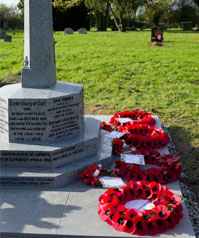 Every year on 11th November, people wear red poppies to remember the millions of soldiers who fought and died in World War I and in all wars since. The red poppies first grew on the battlefields of France and Belgium, where the soil was disturbed by fighting. Because they were the only flowers to grow among the ruins, poppies became a powerful symbol of remembrance.
Every year on 11th November, people wear red poppies to remember the millions of soldiers who fought and died in World War I and in all wars since. The red poppies first grew on the battlefields of France and Belgium, where the soil was disturbed by fighting. Because they were the only flowers to grow among the ruins, poppies became a powerful symbol of remembrance.
At 11 am, we observe two minutes of silence. During this time, everyone stops what they are doing to think quietly about the brave men and women who gave their lives. It’s a way of showing respect and remembering the sacrifices they made.
The Sunday closest to 11th November is called Remembrance Sunday. On this day, the Royal Family, government leaders, and armed forces lay wreaths of poppies at the Cenotaph in London. Across the country, people gather at war memorials, churches, and schools to take part in services and ceremonies.
- The tradition of wearing poppies was inspired by a famous poem called In Flanders Fields written by Lieutenant Colonel John McCrae, a Canadian soldier.
- Some of the poppies sold for remembrance are made from recycled plastic bottles, showing how we can remember the past and care for the planet at the same time.
 CBBC - What is remembrance day?
CBBC - What is remembrance day? The second Sunday of November is Remembrance Sunday, but what does it all mean and what are you meant to do?
 British Legion - Remembrance Day
British Legion - Remembrance Day The First World War officially ended on the eleventh hour on the eleventh day on the eleventh month, 1918 - Armistice Day. This is Remembrance Day.
 Remembrance Day at Activity Village
Remembrance Day at Activity Village Get involved and understand what Remembrance Day is all about with our collection of Poppy Day colouring pages, classroom printables, crafts and activities.
 Poems for Remembrance Day
Poems for Remembrance Day Poems that are used for Remembrance Day.



